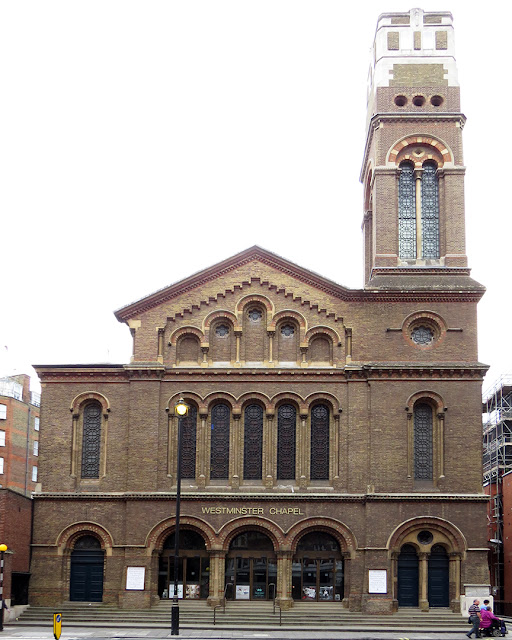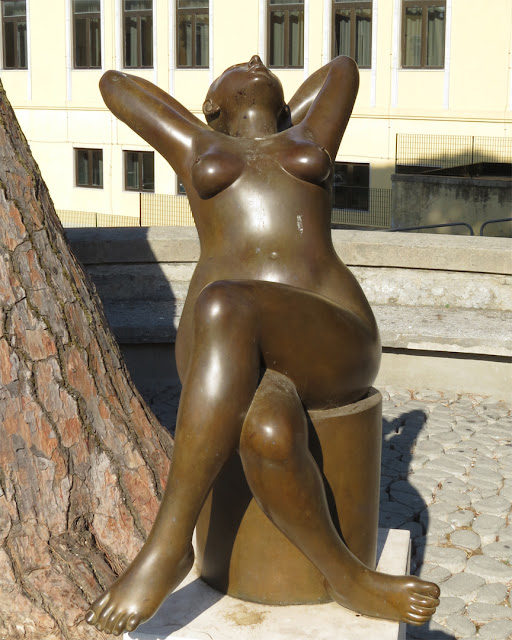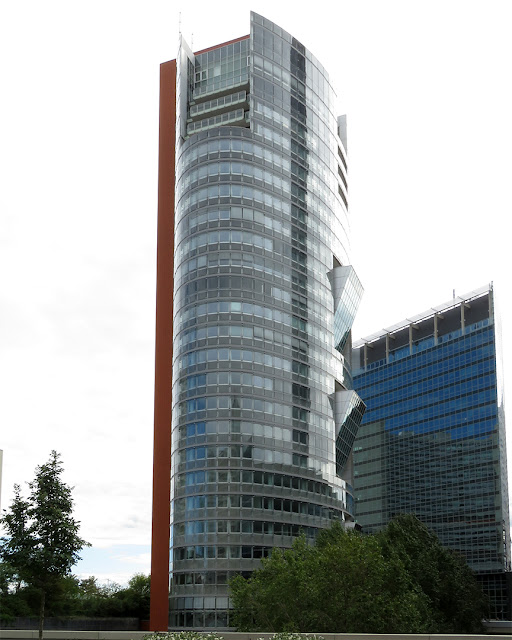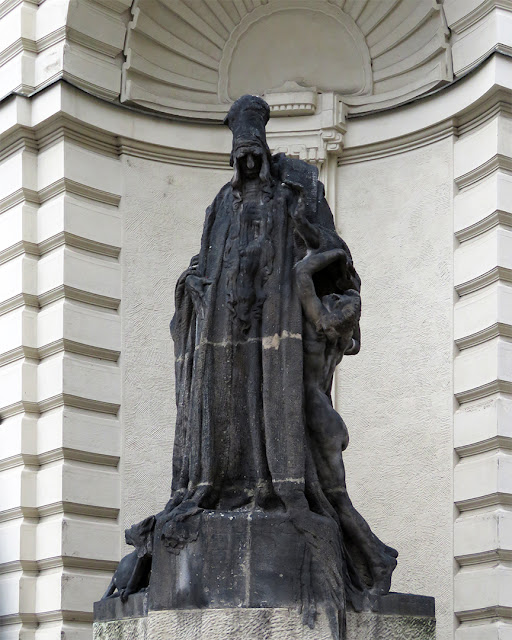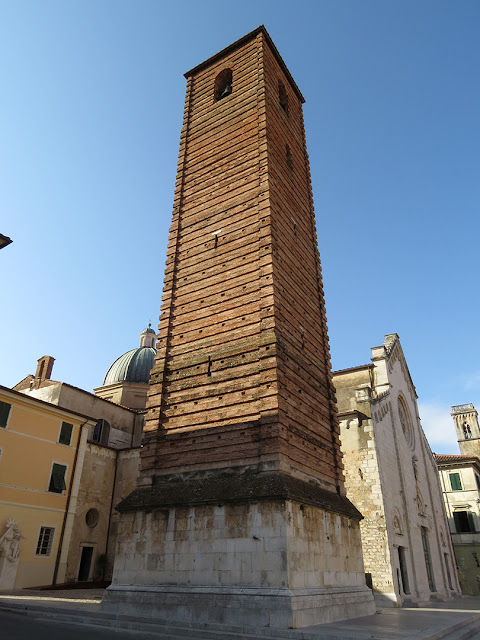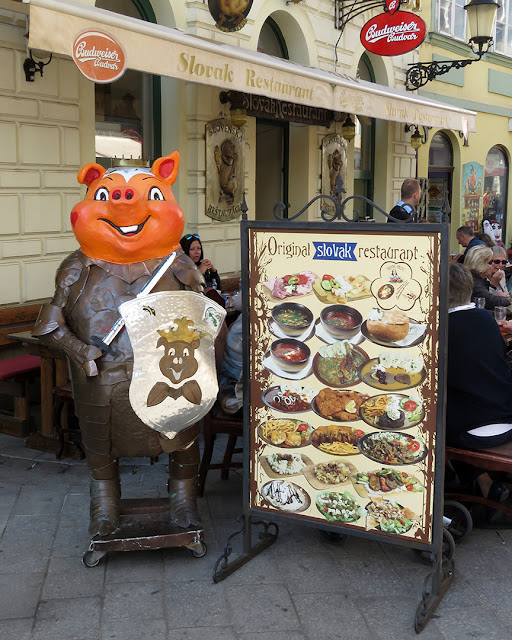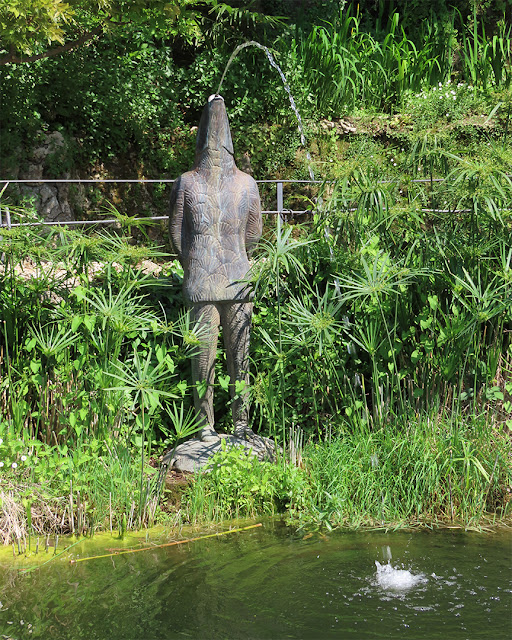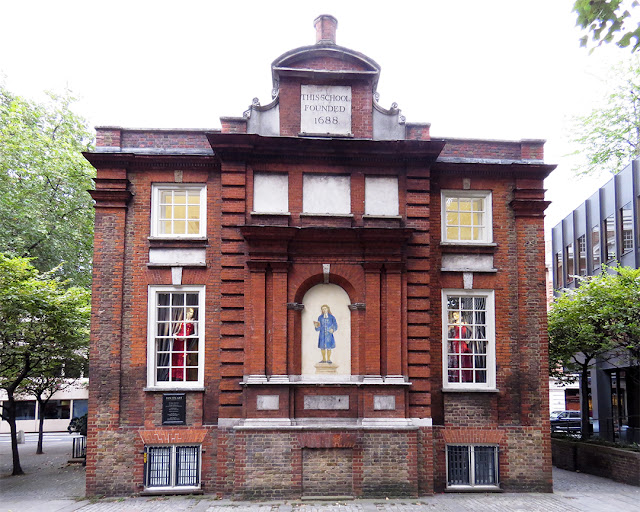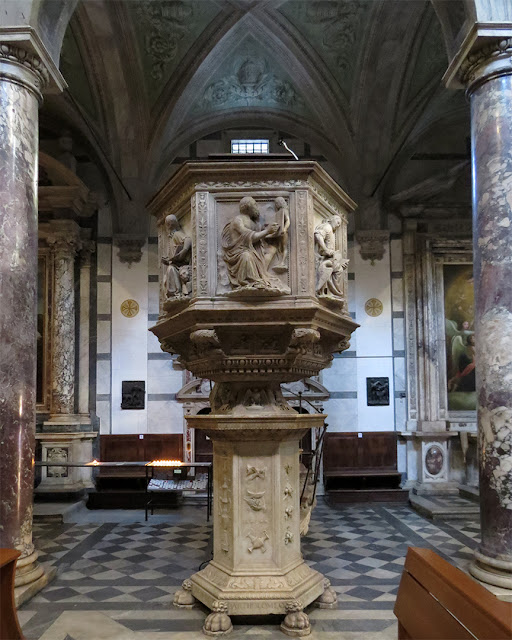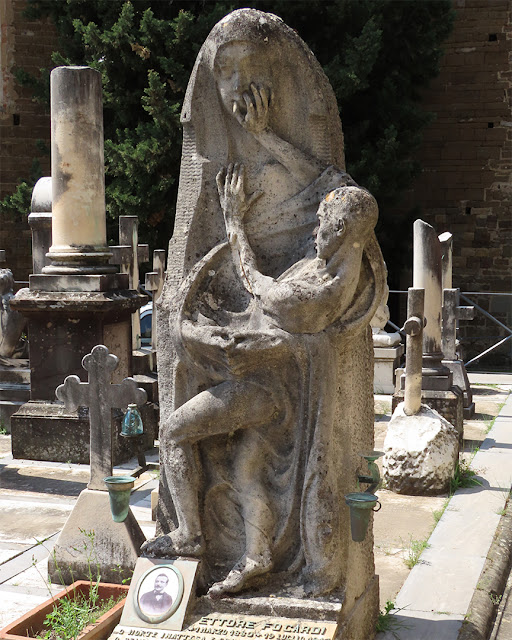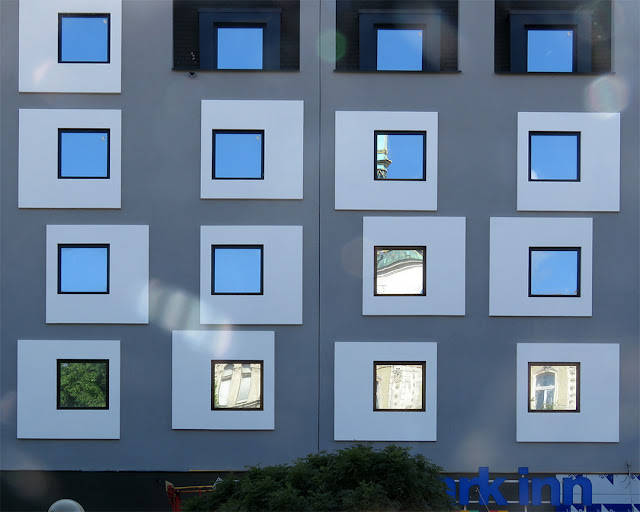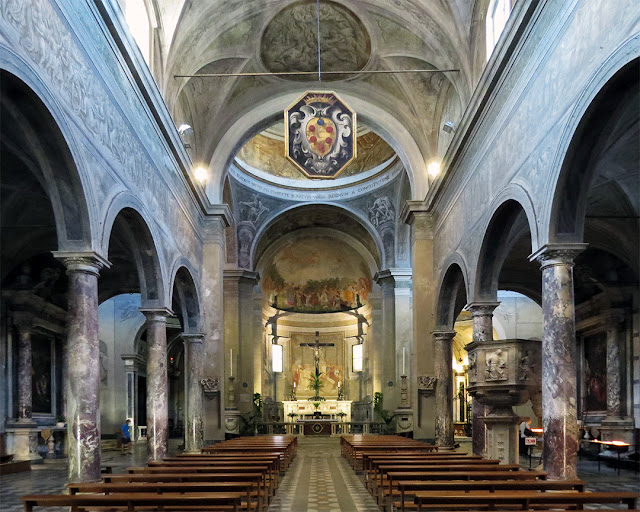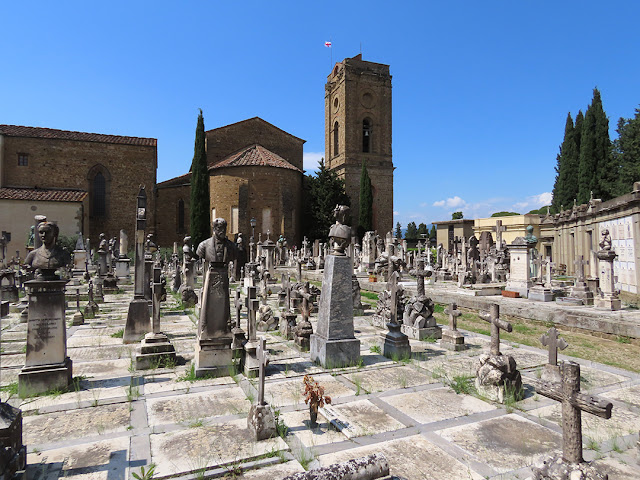Monday, October 31, 2022
Fontana della maternità
“Fontana della maternità” (Maternity fountain) by Sauro Cavallini, 1996
Piazza Ferrucci
Florence, May 2022
Sunday, October 30, 2022
Westminster Chapel
Westminster Chapel
Buckingham Gate, Westminster
London, September 2014
“Westminster Chapel is an evangelical free church in Westminster, central London. The church is in Buckingham Gate, on the corner of Castle Lane and opposite the junction with Petty France. Buckingham Gate is just off Victoria Street and near Buckingham Palace. The church has had several notable pastors including G. Campbell Morgan (1904–17, 1933–43), John Henry Jowett (1918–22), Martyn Lloyd-Jones (1939–68), R. T. Kendall (1977–2002) and Greg Haslam (2002–16).” (Westminster Chapel, Wikipedia)
Saturday, October 29, 2022
Adoratrice del Sole
“Adoratrice del Sole” (Sun Worshipper) by Maria Gamundi, 2000
Piazza Matteotti
Pietrasanta, September 2021
“Maria Gamundi was born in 1952 in Caracas (Venezuela). She studied at thè Pratt Institute of NewYork and the Scuola del Libro of Urbino. She lives and works in Versilia, dividing her lime between Monteggiori and Pietrasanta. Since 1973 she has held important personal exhibitions in Italy, Europe, the United States and Latin America. Her female nudes exude a sculptural force exalted by her deep knowledge of the materials, as weìl as an instinctive joie de vivre which weìl represents her strong Latin American roots.” (Maria Gamundi)
Friday, October 28, 2022
Jan Neruda
Grave of Jan Neruda (1834-1891)
Vyšehradský hřbitov (Vyšehrad Cemetery)
K Rotundě, Vyšehrad
Prague, September 2017
“Jan Nepomuk Neruda (9 July 1834 – 22 August 1891) was a Czech journalist, writer, poet and art critic; one of the most prominent representatives of Czech Realism and a member of the ‘May School’. Jan Neruda was born in Prague, Bohemia; son of a small grocer who lived in the Malá Strana district. Initially, they lived on Újezd Street and later, when he was four, moved to Ostruhová Street (now called Nerudova Street, in his honor), where they owned a house known as ‘U Dvou Slunců’ (At the Two Suns). His studies began in 1845 at the local Grammar school then, in 1850, continued at the Academic Grammar School in Clementinum. His favourite writers at the time were Heine, Byron, Shakespeare, Karel Hynek Mácha and Václav Bolemír Nebeský. After graduation he tried to study law, but he failed. He worked as a clerk for a short time, but was unhappy, so he decided to study philosophy and philology at Charles University. He then worked as a teacher until 1860, when he became a freelance journalist and writer. He started his career at Národní listy (National Sheets). Later, he worked for Obrazy života (Pictures of Life) and Čas (Time). He also contributed to Květy (Blossoms) and Lumír. He became the de facto leader of a generation of writers that included Karolina Světlá, Vítězslav Hálek, Adolf Heyduk and Karel Sabina; devoted to continuing the legacy of Karel Hynek Mácha. They published their works in the literary almanac Máj. By 1871, various groups had labeled Neruda as a ‘Traitor to the Nation’, so he decided to spend some time away; visiting Italy, Greece, France, Germany, Hungary and Egypt. He kept detailed records of these journeys, which provide an interesting testimony to his life and times, with various insights that prove him to be a good observer. From 1883 to his death he lived on Vladislavova Street, 1382/14 in Nové Město, Prague.” (Jan Neruda, Wikipedia)
Thursday, October 27, 2022
Wednesday, October 26, 2022
Tuesday, October 25, 2022
Monday, October 24, 2022
Andromeda Tower
Andromeda Tower by Wilhelm Holzbauer, 1998
Donau-City-Straße
Donaustadt (Donau City)
Vienna, September 2017
Sunday, October 23, 2022
Saturday, October 22, 2022
Szent Gellért Monument
Szent Gellért Monument by Gyula Jankovits, 1904
Gellért-hegy (Gellért Hill)
Budapest, September 2017
“Szent Gellért Monument (a.k.a. Saint Gerard Statue) is on the northeast side of Gellért Hill, rocky crag towering 235m above the Danube. The monument honors Saint Gellért Sagredo (980-1046), the first Hungarian bishop and early Christian evangelizer. Gellért was a member of a noble Venetian family who traveled to Hungary while on pilgrimage to Jerusalem. King Stephen I asked him to stay and educate of the his son, the young prince Emeric. In 1030 the king appointed Gellért first bishop of Marosvár (Csanád), where he founded a monastery, a cathedral, and a school for priests; he converted many Hungarians to Christianity. During the struggle for the throne following the death of Stephen I, Gellért was martyred in 1046. Insurgents who wanted a return to paganism captured Gellért in Buda; according to legend, he placed in a barrel pierced with nails and rolled down the steep hill. He was first buried across the river in Pest, but then his body was moved to Csanád in 1053. He was canonized in 1083 by Pope Gregory VII, and is one of the patron saints of Hungary. The Szent Gellért monument is a 12m bronze statue (1904 by sculptor Gyula Jankovits) of the bishop at the site where Gellért was killed. The statue depicts Gellért victoriously holding aloft a crucifix while at his feet a wild-looking Magyar looks up in awe at the bishop. The statue is framed by a neoclassical semi-circular colonnade, with a man-made waterfall tumbling below. The monument offers panoramic views over the Danube, Elisabeth Bridge, Pest, and the hills beyond. A nice 0.5km walk (one way) from the Pest waterfront is to cross Elisabeth Bridge and ascend the paved pathway (stairs and street lights) on the other side of the bridge to the monument. Bus 7 and Tram 19 stop at Dobrentei ter. at the foot of the hill. Gellért Monument is beautifully lit at night, and accessible at all times with no entry fee.” (Szent Gellért Monument, Tripadvisor)
Friday, October 21, 2022
Zita of Bourbon-Parma
Zita of Bourbon-Parma by Daphné Du Barry
Via Garibaldi
Pietrasanta, September 2021
“Zita of Bourbon-Parma (Zita Maria delle Grazie Adelgonda Micaela Raffaela Gabriella Giuseppina Antonia Luisa Agnese; 9 May 1892 – 14 March 1989) was the wife of Charles, the last monarch of Austria-Hungary. As such, she was the last Empress of Austria and Queen of Hungary, in addition to other titles. She has been declared Servant of God by Pope Benedict XVI. Born as the seventeenth child of the dispossessed Robert I, Duke of Parma, and his second wife, Infanta Maria Antonia of Portugal, Zita married the then Archduke Charles of Austria in 1911. Charles became heir presumptive to the Emperor Franz Joseph I of Austria in 1914 after the assassination of his uncle Archduke Franz Ferdinand of Austria, and acceded to the throne in 1916 after the elderly emperor's death.” (Zita of Bourbon-Parma, Wikipedia)
Thursday, October 20, 2022
Wednesday, October 19, 2022
Santi Michele e Gaetano
Bell tower of the church of Santi Michele and Gaetano (Saints Michael and Cajetan)
Seen from Via dei Pescioni
Florence, May 2022
“San Gaetano, also known as Santi Michele e Gaetano, is a Baroque church in Florence, Italy, located on the Piazza Antinori, entrusted to the Institute of Christ the King Sovereign Priest. A Romanesque church, dedicated solely to Saint Michael the Archangel, had been located at the site for centuries prior to its Baroque reconstruction. Patronized by the Theatine order, the new church was dedicated to Saint Cajetan, one of the founders of the order, though the church could not formally be named after him until his canonisation in 1671. Funding for this reconstruction was obtained from the noble families in Florence, including the Medicis. Cardinal Carlo de' Medici was particularly concerned with the work, and his name is inscribed on the façade. Building took place between 1604 and 1648. The original designs were by Bernardo Buontalenti but a number of architects had a hand in building it, each of whom changed the design. The most important architects were Matteo Nigetti and Gherardo Silvani.” (San Gaetano, Wikipedia)
Tuesday, October 18, 2022
Rabbi Loew
Rabbi Loew by Ladislav Šaloun
Nová radnice (New City Hall)
Mariánské náměstí (Virgin Mary Square)
Staré Město (Old Town)
Prague, September 2017
“Judah Loew ben Bezalel (Hebrew: יהודה ליווא בן בצלאל; between 1512 and 1526 – 17 September 1609),[1] also known as Rabbi Loew (alt. Löw, Loewe, Löwe or Levai), the Maharal of Prague (Hebrew: מהר״ל מפראג), or simply the Maharal (the Hebrew acronym of "Moreinu ha-Rav Loew", 'Our Teacher, Rabbi Loew'), was an important Talmudic scholar, Jewish mystic, and philosopher who, for most of his life, served as a leading rabbi in the cities of Mikulov in Moravia and Prague in Bohemia. Within the world of Torah and Talmudic scholarship, Loew is known for his works on Jewish philosophy and Jewish mysticism and his work Gur Aryeh al HaTorah, a supercommentary on Rashi's Torah commentary. He is also the subject of a 19th-century legend that he created the Golem of Prague, an animate being fashioned from clay.” (Judah Loew ben Bezalel, Wikipedia)
Monday, October 17, 2022
Collegiata di San Martino
Bell tower
Collegiata di San Martino (Collegiate Church of San Martino)
Piazza Duomo
Pietrasanta, September 2021
“The 36 m-tall bell tower has a simple brickwork appearance, but was originally also to be covered with marble plates. It was finished in the late 15th-early 16th centuries by the Florentine architect Donato Benti. In the interior is a curious helicoidal staircase.” (San Martino, Wikipedia)
Sunday, October 16, 2022
Saturday, October 15, 2022
Mediterranée
“Mediterranée” by Jean-Michel Folon, 2003
Giardino delle rose (Rose Garden)
Via Poggi
Florence, May 2022
“A permanent exhibition dedicated to the world-famous Belgian artist Jean Michel Folon is on display in the rose garden. Eleven statues (nine bronze sculptures and two plaster models) by the visionary artist adorn the walks of the garden, in perfect symbiosis with the surrounding environment. Je me souviens, a work of 2003, features a male figure sitting on a bench ready to converse with whomever happens to come and sit next to him.” (Following Folon in Florence’s Rose Garden, SlowItaly)
Friday, October 14, 2022
STRABAG Kunstforum
Exhibition of the artist Bruno Gironcoli
STRABAG Kunstforum
Donau-City-Straße
Donaustadt (Donau City)
Vienna, September 2017
Thursday, October 13, 2022
Madonna del Sole
Madonna del Sole (Our Lady of the Sun), 1424
Collegiata di San Martino (Collegiate Church of San Martino)
Piazza Duomo
Pietrasanta, September 2021
“In the right transept chapel is the venerated relic of the Madonna del Sole (Madonna of the Sun), a painting from an anonymous Late Gothic artist, dated 1424.” (San Martino, Wikipedia)
Wednesday, October 12, 2022
Tuesday, October 11, 2022
Monday, October 10, 2022
Blewcoat School
Blewcoat School
Caxton Street, Westminster
London, September 2014
“Blewcoat School is a building in Caxton Street, London, that was built in 1709 as a school for the poor (a Bluecoat school). It was used as a school until 1926. In 1954, it was purchased by the National Trust who used it as a gift shop and information centre. In 2013 the building was refurbished as The Blewcoat, a store for fashion designer Ian Stuart. The school was founded in Duck Lane in about 1688 by voluntary subscription as a charity school for the education of poor boys to teach them reading, writing, religion, and trades. It moved to purpose-built premises in Caxton Street. From 1714 to about 1876, it also admitted girls. In 1899, it was agreed that the school should move to a site that had been owned by the Christ Church National Schools Trust, and the Caxton Street site was then used for an elementary school. The school closed in 1926. During World War II, the building was used by the American services as a store. Afterwards, the Girl Guides used it as a youth club. When the National Trust bought it in 1954, it was used as their membership and head office. Later, it was converted into a gift shop. June 2014 saw the opening of British designer Ian Stuart's boutique in the building, selling bridal gowns, special occasion wear and evening gown collections.” (Blewcoat School, Wikipedia)
Sunday, October 9, 2022
Marble pulpit
Marble pulpit by Donato Benti and Lorenzo Stagi, 1508
Collegiata di San Martino (Collegiate Church of San Martino)
Piazza Duomo
Pietrasanta, September 2021
“The marble pulpit is instead from 1508, by Donato Benti and Lorenzo Stagi, while the walls and the ceiling were painted by Luigi Ademollo in 1823-1825. The dome was originally octagonal (1453), but was rebuilt on circular plan in 1820.” (San Martino, Wikipedia)
Saturday, October 8, 2022
Two dolphins
Fountain with two dolphins by František Hnátek and Rudolf Kříženecký, 1906
Kostel svatého Mikuláše (St. Nicholas Church)
Staroměstské náměstí
Staré Město (Old Town)
Prague, September 2017
Friday, October 7, 2022
Ettore Focardi
Funerary monument to Ettore Focardi, 1913
Cimitero delle Porte Sante (The Sacred Doors Cemetery)
Via delle Porte Sante
Florence, May 2022
Thursday, October 6, 2022
Wednesday, October 5, 2022
Collegiate Church of San Martino
Collegiata di San Martino (Collegiate Church of San Martino)
Piazza Duomo
Pietrasanta, September 2021
“The church is on the Latin cross plan with a nave, two aisles and a transept. Much of the decoration dates from the reign of Christina, Grand Duchess of Tuscany, who in 1627 commissioned the restoration of the Collegiata to Florentine artists, who provided large devotional altarpieces and sculptures. Artists include painters Matteo Rosselli, Francesco Curradi, Jacopo Vignali, Pietro Dandini, Bastiano Bitozzi, Jacopo Chiavistelli, and Alessandro Cominotti, and the sculptors Giovan Battista Stagi, Stagio Stagi and Ferdinando Tacca.” (San Martino, Wikipedia)
Tuesday, October 4, 2022
Monday, October 3, 2022
Cimitero delle Porte Sante
Cimitero delle Porte Sante (The Sacred Doors Cemetery)
Via delle Porte Sante
Florence, May 2022
“Cimitero delle Porte Sante (The Sacred Doors Cemetery) is a monumental cemetery in Florence located within the fortified bastion of the Basilica of San Miniato al Monte. The idea of a burial site near San Miniato was conceived around 1837, although the camposanto was inaugurated eleven years later, in 1848. The project, originally entrusted to architect Niccolò Matas (the designer of the facade of the Basilica of Santa Croce), was enlarged and in 1864 Mariano Falcini used the area of the sixteenth-century fortress lying around the church. The project of the new cemetery grew parallel with the development of the new road network, elaborated by Poggi, which, with the opening of the Colli Boulevard and the monumental staircase, created new ways to access the basilica.” (Cimitero delle Porte Sante, Wikipedia)
Sunday, October 2, 2022
István Széchenyi
Bust of István Széchenyi by Pataki Béla, 1991
Szabadság tér
Budapest, September 2017
“Count István Széchenyi de Sárvár-Felsővidék (21 September 1791 – 8 April 1860) was a Hungarian politician, political theorist, and writer. Widely considered one of the greatest statesmen in his nation's history, within Hungary he is still known to many as ‘the Greatest Hungarian’.” (István Széchenyi, Wikipedia)
Saturday, October 1, 2022
Duomo di Pietrasanta
Collegiata di San Martino (Collegiate Church of San Martino)
Piazza Duomo
Pietrasanta, September 2021
“The church is on the Latin cross plan with a nave, two aisles and a transept. Much of the decoration dates from the reign of Christina, Grand Duchess of Tuscany, who in 1627 commissioned the restoration of the Collegiata to Florentine artists, who provided large devotional altarpieces and sculptures. Artists include painters Matteo Rosselli, Francesco Curradi, Jacopo Vignali, Pietro Dandini, Bastiano Bitozzi, Jacopo Chiavistelli, and Alessandro Cominotti, and the sculptors Giovan Battista Stagi, Stagio Stagi and Ferdinando Tacca.” (San Martino, Wikipedia)
Subscribe to:
Posts (Atom)


